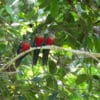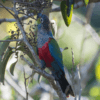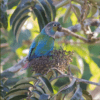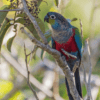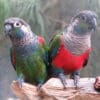Crimson-bellied Conure
Also known as:
Crimson-bellied Parakeet
Also known as:
Crimson-bellied Parakeet
DID YOU KNOW?
The Crimson-bellied Conure engages in geophagy (soil eating) at clay licks.

Pyrrhura

perlata
Size:
24 cm (9.3 in)
Weight:
85-94 g (3-3.3 oz)
Subspecies including nominate:
one
Colour Adult:
Both adults partly green in colour; brown breast with pale off-white and dark brown barring; yellow/green cheeks, turning to blue on lower cheeks; blue collar around hindneck which varies with each bird; red bend of wing, lesser underwing coverts and abdomen; blue thighs to tail coverts; brown/red tail. Beak brown/grey. Eye ring bare and white. Eye dark brown.
Colour Juvenile:
Green lower breast and abdomen. Beak horn in colour with pale grey at base.
More Information:
Content Sources:
CITES
BirdLife International
Cornell Lab of Ornithology/Birds of the World
Parrots: A Guide to Parrots of the World, Juniper and Parr, 1998
Parrots of the World, Forshaw and Cooper, 1989. 2010 edition
Parrots of the World, Forshaw, 2006.
Parrots in Aviculture, Low, 1992.
Lexicon of Parrots, Thomas Arndt.
Captive Status:
Rare
Longevity:
Probably about 12-15 yrs.
Housing:
Aviary or suspended enclosure minimum length 2 m (6.5 ft).
Diet:
Fruits such as: apple, pears, oranges, bananas, pomegranate, cactus fruits, forming about 30 percent of the diet; vegetables such as: carrots, celery, green beans, peas in the pod; fresh corn, green leaves such as: Swiss chard, lettuce, dandelion, chickweed, sowthistle; spray millet; seed mix such as: canary, millet and smaller amounts of buckwheat, oats, safflower and a little hemp; limited soaked and sprouted sunflower; cooked beans and pulses, boiled maize, and complete pellet.
Enrichment:
Are avid chewers so provide plenty of bird-safe, unsprayed flowering, fir, willow, pine, elder or saskatoon branches, wooden block toys, vegetable tanned leather toys. Provide ladders, swings, ropes; noise-makers, push and pull toys, foraging/puzzle toys. Also enjoys bathing so provide overhead misters or shallow water bowls.
Nest Box Size:
Vertical box 20 cm x 20 cm x 70 cm (8 x 8 x 30 in).
Clutch Size:
4-6
Fledging Age:
7-8 weeks
Hatch Weight:
—
Peak Weight:
—
Weaning Weight:
—
World Population:
Unknown but described as fairly common, decreasing.
IUCN Red List Status:
Least Concern
CITES Listing:
Appendix II
Threat Summary:
The population trend was reported to be stable, as the species’ preference for dense forest edge and secondary growth may buffer the impact of tree cover loss. However, deforestation has been accelerating since 2016 at 10% over three generations. Moreover, the species may be subject to trapping pressure. Therefore, while the population may have been stable until recently, it is feared that it is starting to decline slowly, at a rate not exceeding 10% over three generations.
Range:
Amazon River basin in N Brazil and NE Bolivia.
Habitat:
Found up to 600 m (1968 ft) in lowland terre firme tropical rainforest, forest edge, clearings and secondary growth forest.
Wild Diet:
Feeds on Cecropia catkins, Ficus figs, flowers of Bertholletia excelsa and Dioclea glabra, and fruits of Trema micrantha, Eugenia, Zanthoxylum, Tetragastris altissima, Goupia glabra, Alchornea discolor and others.
Ecology and Behaviour:
Seen in small flocks and occasionally in mixed groups with Painted Conures (Pyrrhura picta) and Golden-winged Parakeets (Brotogeris chrysopterus). Often seen descending to rivers and creeks to bathe and drink.
Clutch and Egg Size:
4-6 eggs, 25 x 20 mm (1.0 x 0.8 in).
Breeding Season:
August-November; probably also April-June. Presumably nests in tree hollows.
Related Links:
—
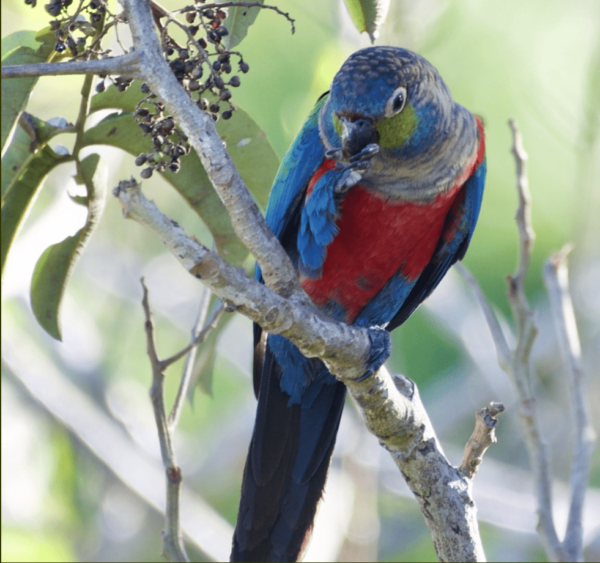
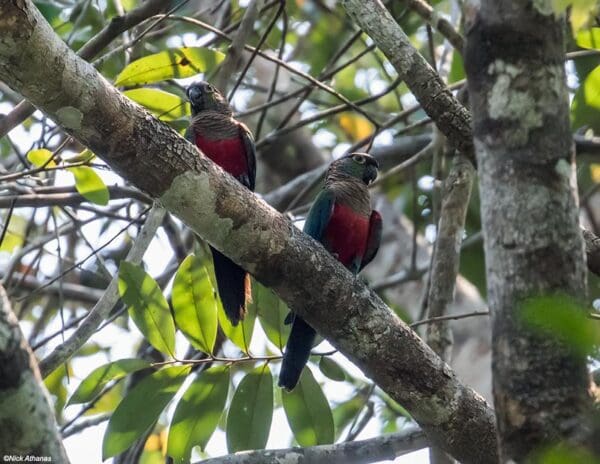
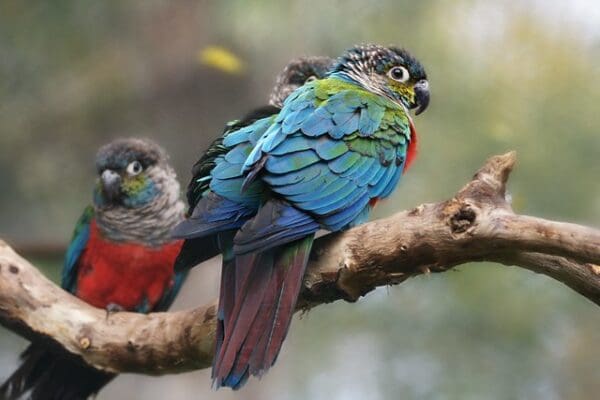
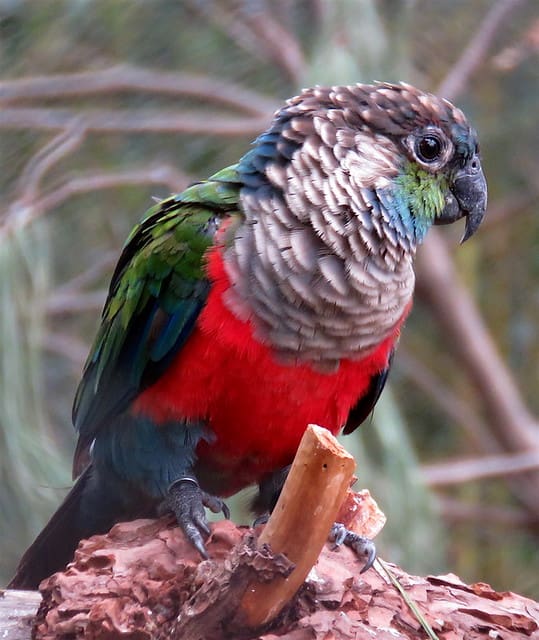
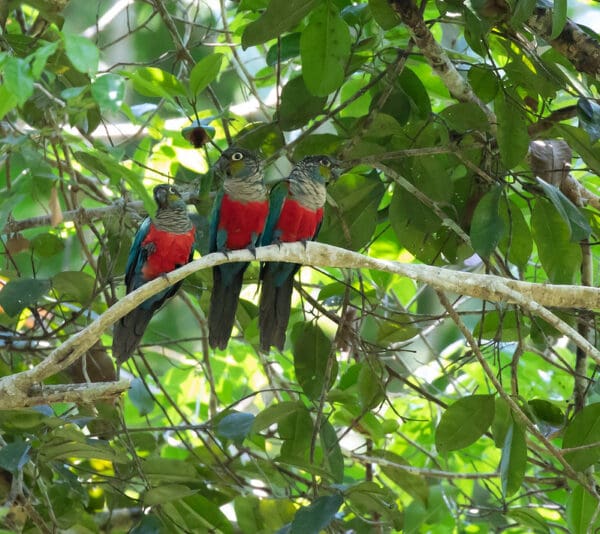
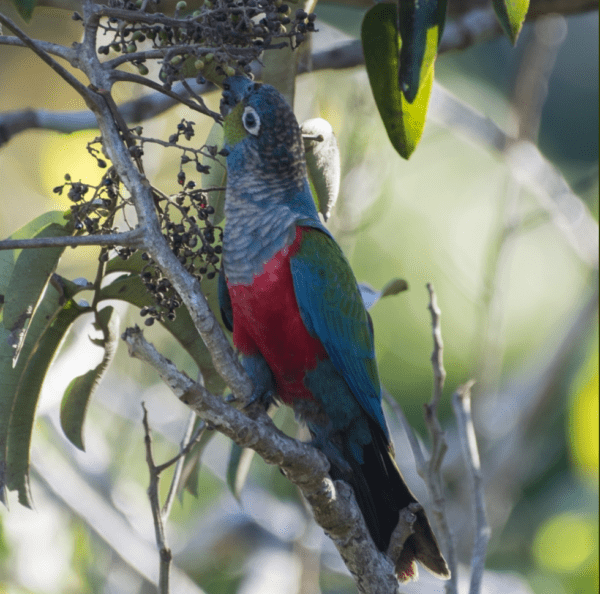
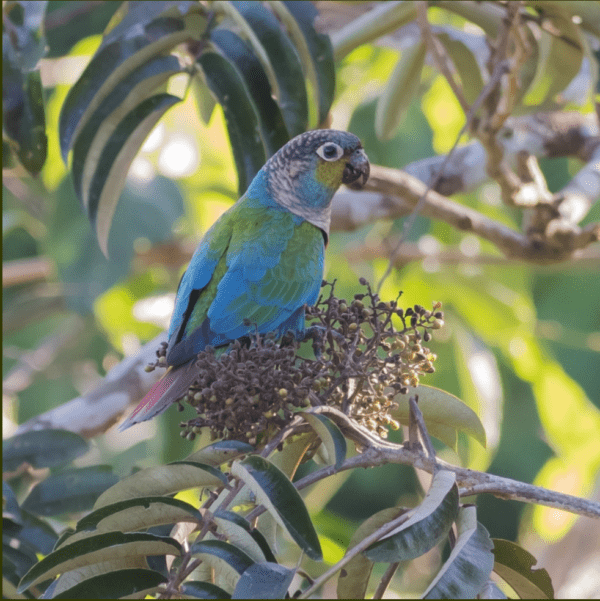
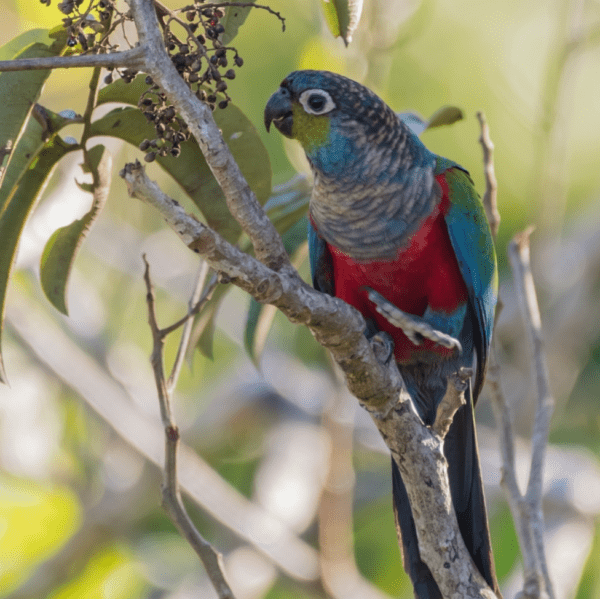
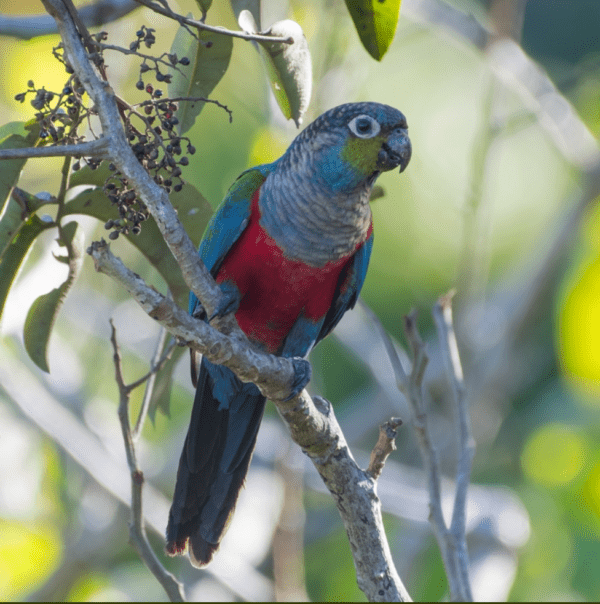
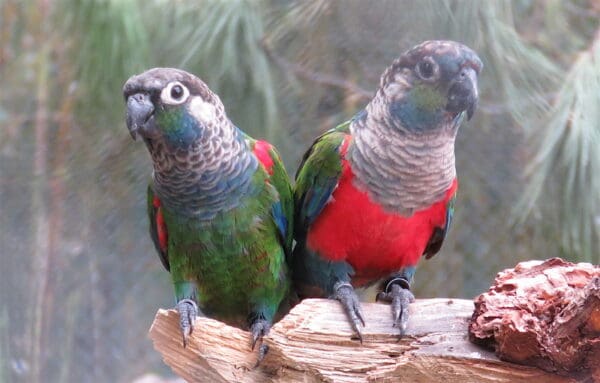
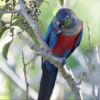
![© Nick Athanas [CC BY-SA 2.0] via Flickr Wild Crimson-bellied Conures perch in a tree](https://parrots.org/wp-content/uploads/2023/01/wpt_Crimson-bellied-Conure_1335-9-100x100.jpg)
![© Roger Smith [CC BY-SA 2.0] via Flickr Crimson-bellied Conures perch on a branch](https://parrots.org/wp-content/uploads/2023/01/wpt_Crimson-bellied-Conure_1335-8-100x100.jpg)
![© Florin Feneru [CC BY-SA 2.0] via Flickr A Crimson-bellied Conure perches on a limb](https://parrots.org/wp-content/uploads/2023/01/wpt_Crimson-bellied-Conure_1335-7-100x100.jpg)
